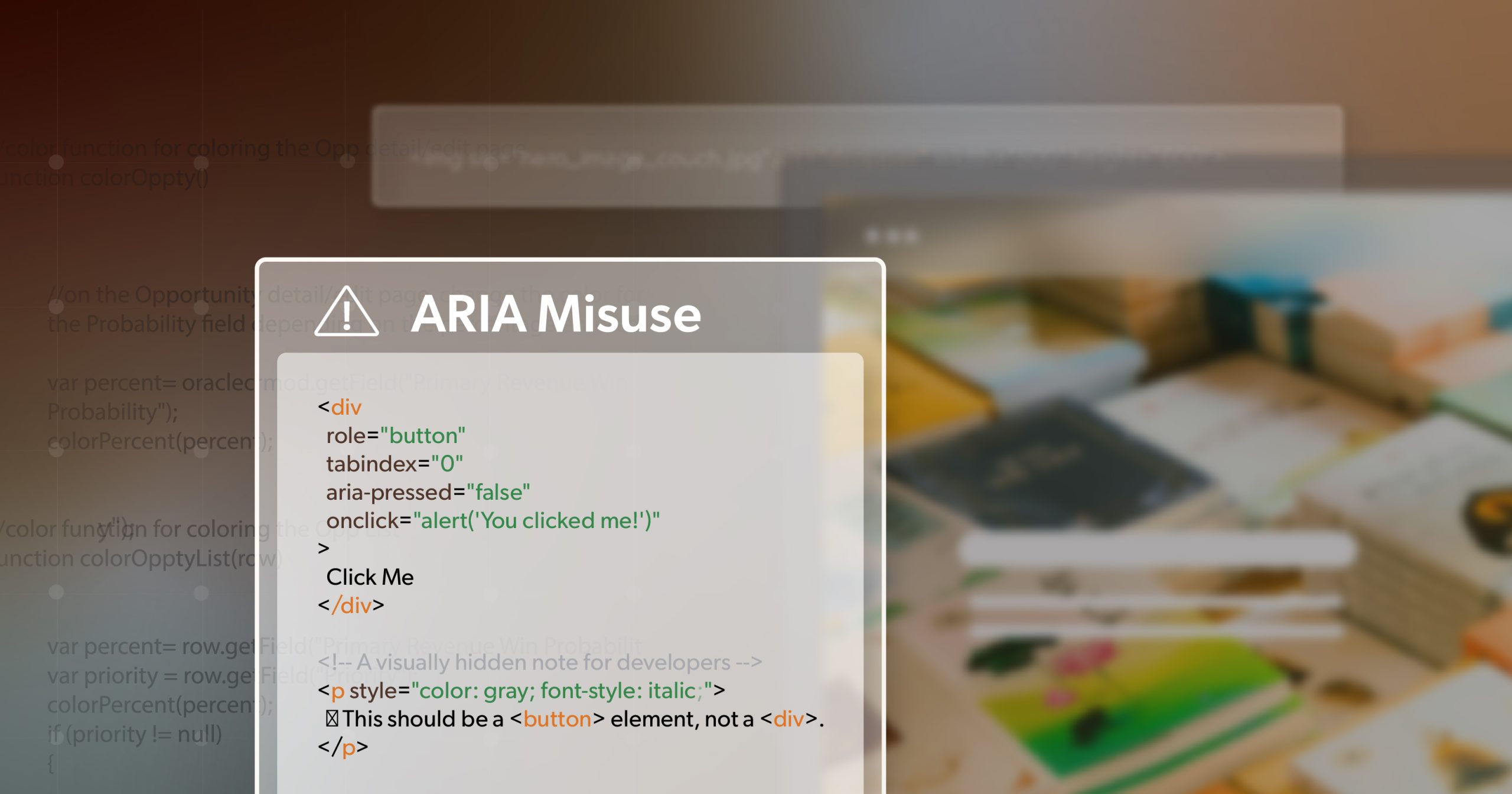Modern web applications thrive on interactivity. Tabs, listboxes, and data grids make complex tasks easier for sighted users—but without proper semantics, those same widgets can shut people out.
For example, a set of tabs may look visually distinct, but unless screen readers know which tab is currently selected, the component is unusable for blind users. Similarly, keyboard-only users can be stranded if selection isn’t tied to focus and navigation logic.
That’s where aria-selected comes in. This attribute bridges the gap between visual presentation and assistive technology, ensuring state changes are clearly communicated. In this guide, we’ll cover what aria-selected means, when to use it, real-world code examples, and best practices for building accessible interactions.
Decoding aria-selected
According to the WAI-ARIA specification, aria-selected communicates the selection state of an element in a widget. It doesn’t change visuals—it adds semantic meaning to the accessibility tree so assistive tech can interpret the UI correctly.
Values Explained
true→ This item is selected.false→ This item is selectable but not selected.- (Absence) → This item isn’t selectable at all.
Tip: Roles that support aria-selected include: tab, option, row, gridcell, and treeitem. Use it only where a “selected” state makes sense.
aria-selected vs. Other Attributes
It’s easy to confuse aria-selected with other ARIA attributes. Here’s how to know when you’re using the right one:
| Attribute | Primary Purpose | Typical Components |
|---|---|---|
| aria-selected | Indicates which item is currently chosen | Tabs, listboxes, grids, tables |
| aria-checked | Binary on/off state | Checkboxes, radios |
| aria-pressed | Toggle button active state | Toolbar buttons |
| aria-current | Denotes user’s current location | Nav links, breadcrumbs |
Practical Use Cases & Code
Tabs
Tabs are a classic single-select widget. Only one tab can be selected at a time.
<div role="tablist" aria-label="Profile sections">
<button id="tab-overview" role="tab" aria-selected="true"
aria-controls="panel-overview">Overview</button>
<button id="tab-settings" role="tab" aria-selected="false"
aria-controls="panel-settings">Settings</button>
</div>
<div id="panel-overview" role="tabpanel" aria-labelledby="tab-overview">
<!-- Overview content -->
</div>
<div id="panel-settings" role="tabpanel" aria-labelledby="tab-settings" hidden>
<!-- Settings content -->
</div>Implementation Notes
- On click, Enter, or Space: update
aria-selected, swap focus, and show the panel. - Keyboard navigation: Left/Right (or Up/Down for vertical), Home/End for quick jumps.
Listbox (Multi-Select)
Listboxes can be single- or multi-select. Here’s a multi-select version:
<ul role="listbox" aria-label="Choose toppings"
aria-multiselectable="true" tabindex="0"
aria-activedescendant="opt-pepperoni">
<li id="opt-pepperoni" role="option" aria-selected="true">Pepperoni</li>
<li id="opt-mushroom" role="option" aria-selected="false">Mushrooms</li>
<li id="opt-olive" role="option" aria-selected="false">Olives</li>
</ul>Interaction Details
- Arrow keys move focus;
aria-activedescendantupdates to track the active item. - Space toggles selection state.
- Ctrl/Shift + Arrow supports range selection like desktop apps.
Grids / Spreadsheets
Grids allow row and cell-level navigation. They’re common in dashboards and spreadsheets.
<div role="grid" aria-label="Sales records" aria-activedescendant="cell-1-2">
<div role="row">
<div role="columnheader" aria-colindex="1">Date</div>
<div role="columnheader" aria-colindex="2">Sales</div>
</div>
<div role="row" aria-rowindex="1">
<div id="cell-1-1" role="gridcell" aria-colindex="1" aria-selected="false">Jan</div>
<div id="cell-1-2" role="gridcell" aria-colindex="2" aria-selected="true">5 000</div>
</div>
<div role="row" aria-rowindex="2">
<div id="cell-2-1" role="gridcell" aria-colindex="1" aria-selected="false">Feb</div>
<div id="cell-2-2" role="gridcell" aria-colindex="2" aria-selected="false">4 200</div>
</div>
</div>JavaScript Must Handle
- Arrow keys move focus across cells and sync
aria-activedescendant. - Space/Enter toggles
aria-selected. - Optional: persist state (e.g., in localStorage) to remember selections.
Best Practices for aria-selected
Focus Management
- In single-select widgets: focus stays inside, arrow keys update selection.
- In multi-select widgets: focus moves independently, Space/Enter toggles states.
- Always update
aria-activedescendantdynamically.
Visual Feedback Beyond Color
- Don’t rely on color alone. Use icons, bold text, or borders.
- WCAG 2.2 requires at least 3:1 contrast for selected/focus states.
Keyboard Navigation
- Tabs: Arrow keys, Home/End, Enter/Space to activate.
- Listbox/Grid: Arrow keys plus Space/Enter (and Ctrl/Shift combos for multi-select).
- Optional: Escape to clear selection or exit.
Testing Your Implementation
Accessibility doesn’t stop at code—it must be validated.
- Screen reader testing: NVDA, JAWS, and VoiceOver should announce selection changes correctly.
- Keyboard walkthroughs: Confirm focus order and selection behavior.
- Automated checks: Useful for catching missing attributes, but always supplement with manual testing.
Bonus Patterns
Once you’re comfortable with the basics, aria-selected can also power:
- ARIA Trees: File explorer-like navigation.
- Carousels: Tabs-like controls for slide navigation.
- Email-style panels: Combining aria-selected with
aria-multiselectablefor Gmail-style selection logic.
Build with Inclusion from the Start
The aria-selected attribute may seem small, but it represents a bigger principle: creating interfaces where everyone can interact equally.
Accessibility is about thoughtful interaction design, not just compliance checklists. By implementing aria-selected correctly, you close the gap between a slick UI and one that’s truly inclusive.
Don’t wait until launch—or worse, until a lawsuit—to think about accessibility. Build it in from the beginning, and both your users and your future self will thank you.
Want clarity on how your site measures up or how to improve implementation? Schedule a private ADA briefing with 216digital and get expert insight on real-world accessibility practices.

